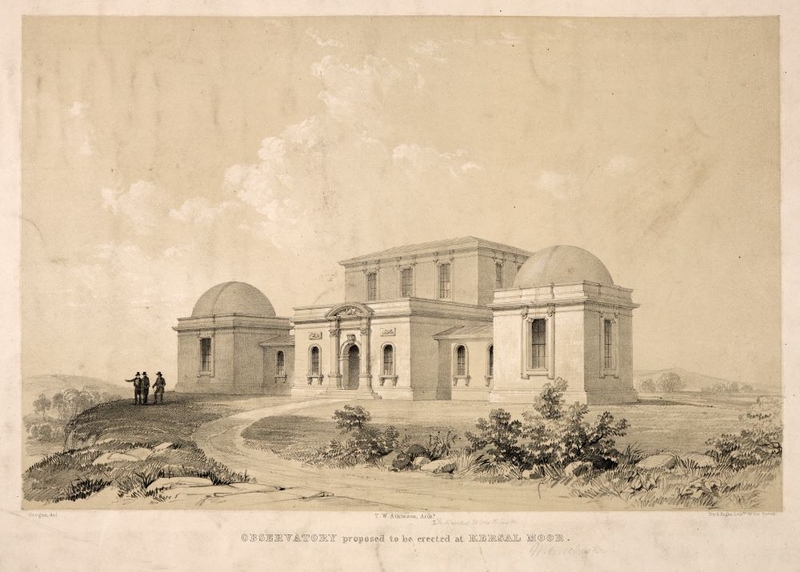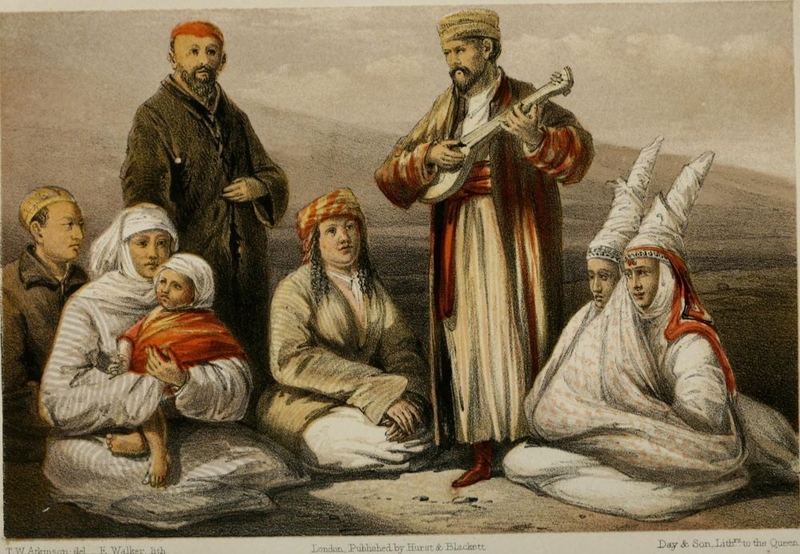Eccentric citizens: an occasional look at unusual lives associated with Manchester
You can dream dreams and make plans but it doesn’t mean anyone is paying attention. Poor Thomas Witlam Atkinson (1799–1861) was the Cassandra of Manchester architecture. And a very naughty boy to boot. As with Cassandra at Troy who prophesied the fall of the city but was cursed to be ignored, Atkinson made plan after plan for Manchester all to no avail.
He was in debt, spent some time in a debtor's gaol, and then comprehensively changed his life
Atkinson started as a young architect in a hurry. Trained as a stone mason in Yorkshire, he graduated to a clerk of works on several projects before setting up as an architect in London. But London is London where snobbery came as second nature especially in the late 1820s. Manchester beckoned, a burgeoning city more likely to accept a struggling visionary from a working class Tyke background.

It didn’t quite work out like that. Atkinson seems to have been too keen, too ambitious and perhaps the money wasn’t there. Not that he wasn’t given commissions. He designed the Manchester and Liverpool District Bank on Spring Gardens (demolished) and then St Luke’s (main image above) in the prosperous suburb of Cheetham Hill.
The latter, consecrated in 1839, was his masterwork, an original and exhilarating personal vision of Perpendicular Gothic architecture complete with a spire and a lofty interior. Felix Mendelssohn played the organ for over an hour on a visit to the church in April 1847. It was that sort of prestigious place. The church is now a fenced off ruin.
Atkinson went further and devised a plan for a grand row of mansions, called St Luke’s Place, spreading down the hill close to the church. It never happened.

Nor did his excellent vision for the Unitarian church on Upper Brook Street, which would have provided the city with a lovely vision of a Greek Doric temple: Manchester’s mini-Parthenon. Instead Charles Barry, the architect of the building that houses the present Manchester Art Gallery and several churches in the area, won out with a Gothic design.

Another vision of Piccadilly as a classically designed street and esplanade also bit the dust. As did his idea for an observatory on Kersal Moor in present-day Salford.

The setbacks all seemed too much for Atkinson who left architecture after Manchester. He was in debt, spent some time in a debtor's gaol, and then comprehensively changed his life and never looked back. He became Britain’s favourite travel writer and illustrator. He travelled Greece, India and most remarkably Siberia, Mongolia and Central Europe over several years.
Prior to the Siberia trip he had married his second wife, an English governess in Moscow, Lucy Sherrad Finlay, who was 18 years his junior. Whilst travelling through the freezing Kirghiz Steppes of Siberia in November 1848 their son was born and exotically called Alatau Tamchiboulac Atkinson – the name came from a river of the area. With their tiny son, Atkinson and his wife were the first Europeans to travel the Dzungarian Alatau mountains between Kazakhstan and China.

So, in the end, Atkinson became famous not for his buildings but for his art, his books and his talks. His first book in 1858 had a title almost as long as his journeys, Oriental and Western Siberia: a Narrative of Seven Years' Explorations and Adventures in Siberia, Mongolia, the Kirghis Steppes, Chinese Tartary, and part of Central Asia. It was a huge success. He was now, with David Livingstone, the most celebrated British explorer of his day. He shared a platform with Livingstone at a talk in the Royal Geographical Society. Away from his speaking engagements and books his watercolours capturing the landscapes and cultures of Central Asia were popular.
Lucy joined in as well and published her own book Recollections of Tartar Steppes and their Inhabitants.

Lucy's book was published in 1863 and by then circumstances had changed. Thomas Witlam Atkinson was two years dead. Scandal was in the air.
Rumours had always circulated about Atkinson’s possible role as a British spy during his travels and he had been promised a government pension. Lucy applied for the pension and the control of his estate when he died but was appalled to find that her husband had been a bigamist and the estate had been claimed by his still living first wife Rebecca.
It seems than when his debts had become too large he’d simply abandoned Rebecca and the children they’d had together in Manchester. After his overseas exploits and his return to Britain he’d been careful to never mention Lucy and Alatau in any of this writings and lectures. Whether this seemed strange or unfair to Lucy at the time is not known but it must have made sense when the bigamy was revealed.
Lucy eventually gathered support from friends at the Royal Geographical Society to pay for Alatau’s education. Her book gave her some income and she received a Civil List pension in 1870 for her service to the country. She died in 1893.
As for the exotically named Alatau he inherited the wanderlust. He eventually settled in Hawaii where he became the editor of the Hawaiian Gazette, organised the first census in those islands and was the director of education.
Perhaps, given the wild romance of the remarkable Thomas Witlam Atkinson’s life the present state of St Luke’s is fitting. In Manchester his memorial is an atmospheric ruin, shorn of its tower and surrounded by a graveyard of tumbled stones and weeping angels. It could be a scene right out of one of Atkinson’s own watercolours.
This article is taken from Illusion & Change Manchester written by Jonathan Schofield. There's a description of the book here and you can order it from the same place.
Get the latest news to your inbox
Get the latest food & drink news and exclusive offers by email by signing up to our mailing list. This is one of the ways that Confidentials remains free to our readers and by signing up you help support our high quality, impartial and knowledgable writers. Thank you!
















